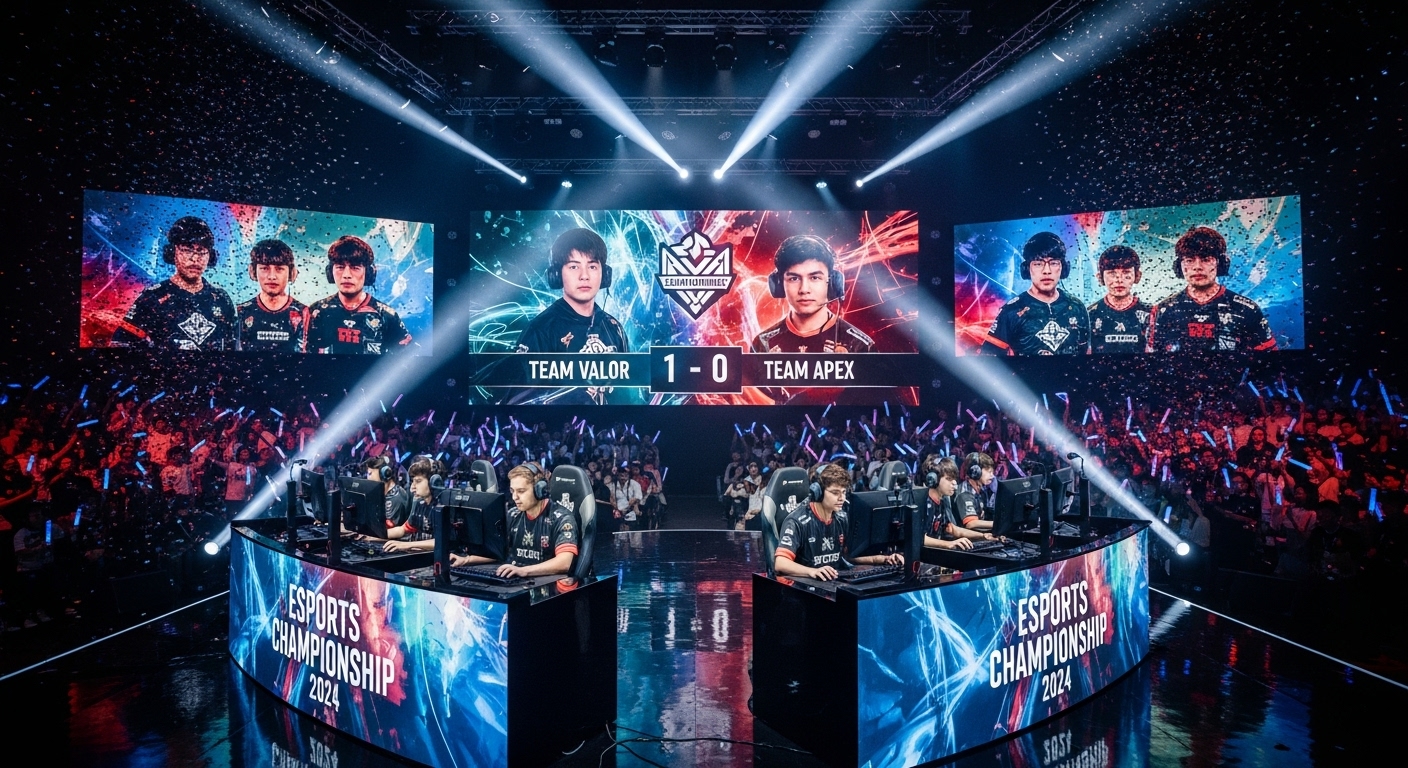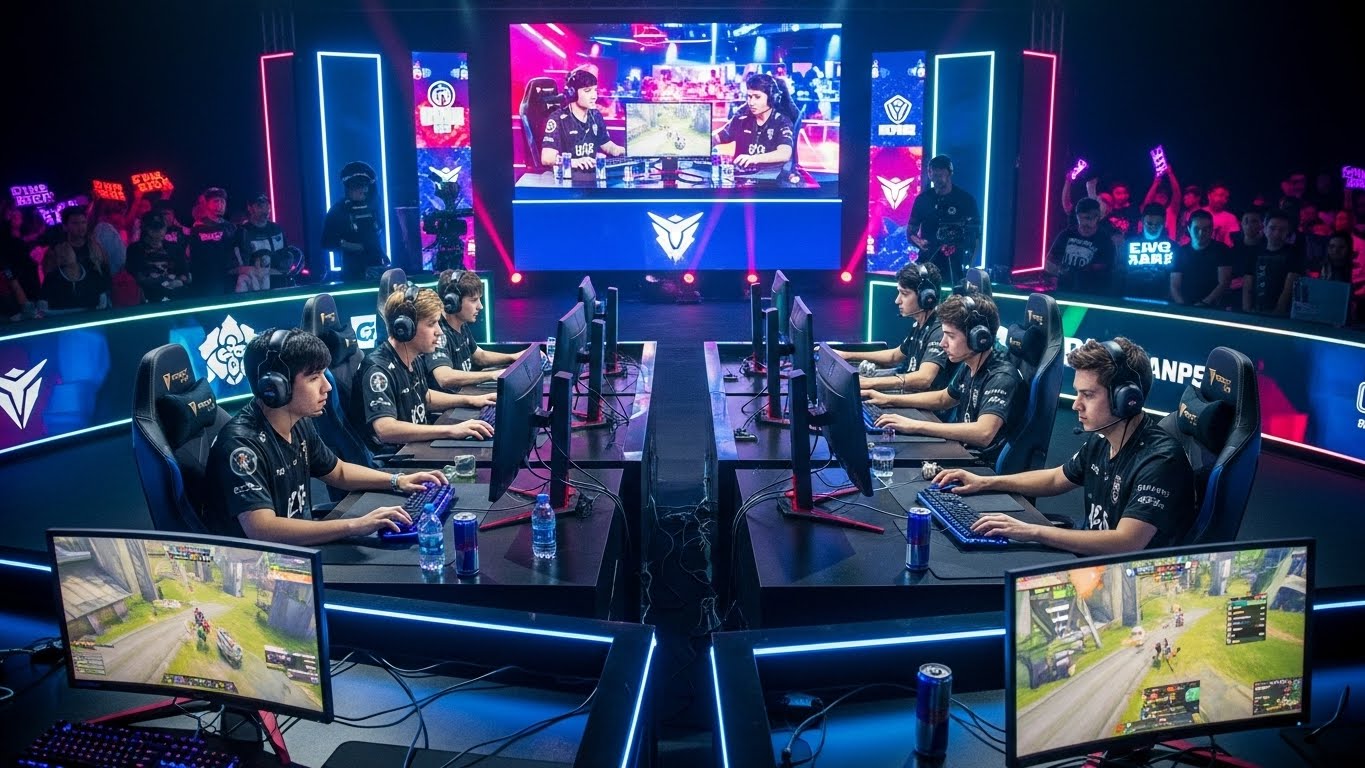Esports, short for electronic sports, has transformed from a niche hobby into a worldwide phenomenon that rivals traditional sports in popularity, viewership, and economic impact. What was once limited to local gaming competitions in arcades and LAN parties has now become a sophisticated industry with professional teams, massive tournaments, sponsorships, and millions of fans around the globe. The journey of esports is a testament to the evolution of technology, culture, and competitive entertainment.
In this blog, we explore the origins of esports, its growth as an industry, the popular games driving the movement, the training and preparation of professional players, the role of technology, cultural influence, economic impact, challenges, and what the future holds for this ever-expanding field.
The Origins of Esports
The roots of esports trace back to the late 1970s and early 1980s with the emergence of arcade gaming. Players competed for high scores in games like Space Invaders, Pac-Man, and Donkey Kong. Although these competitions were often informal, they created communities of players and established the concept of competitive gaming.
The 1990s saw the rise of networked multiplayer games on personal computers. Titles like Doom, Quake, and Warcraft allowed players to compete over local area networks, marking a turning point in competitive gaming. South Korea became a pioneer in professional esports during this time, creating dedicated gaming centers, televised competitions, and leagues that showcased players as athletes.
The late 1990s and early 2000s introduced online multiplayer games such as Counter-Strike, StarCraft, and Warcraft III, which helped esports expand globally. These games laid the foundation for modern esports tournaments, where strategy, teamwork, and skill became critical to success.
The Growth of Esports as an Industry
Esports has grown into a multi-billion-dollar industry. Revenue comes from sponsorships, media rights, ticket sales, merchandise, and digital advertising. Major organizations such as Riot Games, Valve, and Blizzard Entertainment have built professional ecosystems that include leagues, tournaments, and official rankings.
Professional esports teams operate much like traditional sports franchises. They employ players, coaches, analysts, and support staff. Training regimens focus on refining skills, studying opponents, and developing strategies. Major tournaments, such as the League of Legends World Championship, Dota 2 The International, and CS:GO Majors, draw millions of viewers both online and in stadiums, offering prize pools that often reach millions of dollars.
Streaming platforms like Twitch, YouTube Gaming, and Facebook Gaming have also contributed to the growth of esports. These platforms allow fans to watch live matches, interact with players, and engage with a global community of enthusiasts. The accessibility and interactivity of streaming have made esports not only a competitive activity but also a form of social entertainment.
Popular Esports Titles
Esports encompasses a wide variety of game genres, each attracting unique player bases and audiences.
Multiplayer Online Battle Arena (MOBA)
MOBAs like League of Legends and Dota 2 are among the most popular esports titles. Teams select unique heroes or champions and work together to destroy the opposing team’s base. MOBAs require strategic planning, teamwork, and quick decision-making, making them ideal for competitive play.
First-Person Shooters (FPS)
FPS games such as Counter-Strike: Global Offensive, Call of Duty, and Overwatch emphasize accuracy, reflexes, and tactical thinking. Fast-paced and intense, these games attract large audiences and provide thrilling experiences for both players and viewers.
Battle Royale
Battle royale games like Fortnite and PUBG combine survival, strategy, and shooting mechanics. Players compete in large-scale matches with the goal of being the last person or team standing. The unpredictability and dynamic nature of these games make them extremely popular among esports fans.
Sports Simulations
Sports simulation games such as FIFA and NBA 2K replicate real-world sports in a virtual setting. Competitive leagues and tournaments provide opportunities for players to demonstrate their strategic and technical skills in familiar sporting environments.
Fighting Games
Fighting games like Street Fighter, Tekken, and Super Smash Bros. focus on individual skill, timing, and strategy. These esports titles have passionate communities, long-standing competitive scenes, and global tournaments that highlight the technical mastery of their players.
Training and Preparation in Esports
Professional esports players train rigorously to compete at the highest level. Unlike casual gaming, professional play requires a combination of physical conditioning, mental focus, and strategic preparation.
Physical Training
Physical fitness is critical for maintaining reflexes, endurance, and focus during long hours of practice. Many players incorporate regular exercise routines, proper nutrition, and ergonomic setups to prevent repetitive strain injuries, eye fatigue, and other health issues common among gamers.
Mental Preparation
Mental resilience and focus are key components of esports training. Players study opponents, analyze gameplay, and develop strategies with the guidance of coaches and analysts. Team communication, decision-making under pressure, and stress management are emphasized during practice sessions.
Strategy and Analytics
Competitive gaming is highly analytical. Teams use data-driven approaches to refine tactics, optimize performance, and anticipate opponents’ strategies. Video analysis, performance metrics, and simulation exercises are common methods employed by professional esports organizations.
The Role of Technology in Esports
Technology underpins every aspect of esports. High-performance computers, specialized gaming peripherals, and high-speed internet connections are essential for competitive play.
Hardware and Peripherals
Precision and speed are critical in esports. Gaming keyboards, mice, headsets, and monitors are designed for low latency, accuracy, and reliability. Ergonomic setups also play a role in sustaining long practice sessions.
Software and Analytics
Spectator modes, replay systems, and analytic tools allow teams to study opponents and refine strategies. Data-driven insights help players improve mechanics, coordination, and decision-making.
Streaming Platforms
Live streaming platforms enable global access to esports tournaments. Interactive features such as chat, polls, and virtual events enhance engagement and create a participatory experience for viewers.
Artificial Intelligence and Anti-Cheat Systems
AI assists in monitoring player behavior, detecting cheating, and providing strategic insights. Anti-cheat systems maintain fair play, ensuring the integrity of competitions.
Cultural Impact of Esports
Esports has grown into a global cultural phenomenon. Professional players are recognized as celebrities, and fan engagement extends beyond gameplay into fashion, media, and entertainment.
Esports communities foster collaboration and social interaction. Fans participate in forums, social media groups, and fan events, creating a sense of belonging. Content creation, streaming, and cosplay are integral aspects of esports culture, further enriching the ecosystem.
Educational institutions have embraced esports by offering scholarships, academic programs, and collegiate teams. This legitimizes esports as a career path and fosters opportunities for young talent to pursue professional gaming.
Economic Impact of Esports
The esports industry generates billions in revenue and contributes to the global economy. It creates employment in areas such as game development, event management, marketing, broadcasting, and analytics.
Major tournaments drive tourism, sponsorships, and merchandise sales. Brands outside the gaming sector use esports to reach younger audiences through advertising, partnerships, and collaborations. The economic footprint of esports continues to expand, reflecting its influence as both an entertainment and commercial force.
Challenges in Esports
Despite rapid growth, esports faces challenges that must be addressed for long-term sustainability.
- Player Burnout: Intense training schedules can lead to mental and physical exhaustion. Support systems and regulated practice hours are essential.
- Regulatory Issues: The global nature of esports creates legal complexities, including contracts, intellectual property, and gambling laws.
- Community Toxicity: Online harassment, cheating, and negative behavior are ongoing concerns that require moderation and education.
- Monetization and Accessibility: Ensuring fair revenue distribution and providing access for emerging players are ongoing challenges for the industry.
The Future of Esports
The future of esports is bright and filled with potential. Technological advancements such as virtual reality, augmented reality, and AI will enhance both gameplay and spectating experiences. Cross-platform play will allow players on different devices to compete seamlessly.
Esports will continue to integrate with mainstream entertainment, including music, movies, and interactive media. As traditional sports and esports collaborate on hybrid events, the line between physical and digital competition will blur.
International recognition, such as inclusion in multi-sport events and potential Olympic consideration, underscores the legitimacy and global significance of esports. Investment, audience growth, and innovation will ensure that esports remains a dynamic and influential sector of entertainment.
Conclusion
Esports has transformed competitive gaming into a global cultural, social, and economic phenomenon. From its early days in arcades to massive international tournaments, esports represents a unique fusion of skill, strategy, technology, and entertainment.
Professional players are athletes, teams operate as franchises, and fans engage in vibrant communities. Technology, streaming, and analytics have expanded the reach of esports, while cultural and economic impacts continue to grow.
Esports is not just a pastime—it is a global movement that demonstrates the power of digital competition. As the industry continues to innovate and expand, esports will remain at the forefront of entertainment, connecting millions of players and fans around the world.




